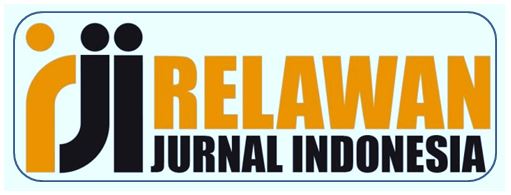Fiscal Policy Analysis Bekasi District 2021 Fiscal Year
DOI:
https://doi.org/10.59110/aplikatif.v2i2.256Keywords:
Bekasi Regency, Fiscal Policy, Financial StructureAbstract
This study aims to analyze the fiscal policy implemented by the Bekasi Regency local government. The goal is to improve the financial structure by increasing regional financial capacity, which ultimately creates a positive fiscal gap as an indicator of policy success. This study used a qualitative literature review approach, where data was gathered through observations, literature study, and the examination of various secondary sources. The collected data was then analyzed using a descriptive model, which involves describing the data as it is without any alterations or modifications. The findings revealed that the Bekasi Regency Government has put in place various measures to achieve a positive fiscal gap. These include Extensification, which involves maximizing Regional Original Revenue (PAD), and Intensification, where the Tax Object Sale Value (NJOP) is adjusted to optimize the revenue from Fees for the Acquisition of Rights on Land/Building (BPHTB).
References
Badan Pusat Statistik Kabupaten Bekasi. (2022). Kabupaten Bekasi Dalam Angka 2021. Retrieved from https://bekasikab.bps.go.id
Bekasikab.Go.Id. (2022). DPRD Kabupaten Bekasi Dukung Diversifikasi Sektor Usaha BBWM. Retrieved from https://www.bekasikab.go.id/Pemkab-Dan-Dprd-Kabupaten-Bekasi-Dukung-Diversifikasi-Bbwm
Dedy S, M. co. (2023). Pemkab Bekasi Terapkan Kebijakan Khusus Penggunaan Produk Lokal Melalui BEBELI. Retrieved from https://metrodua.com/2023/03/Pemkab-Bekasi-Terapkan-Kebijakan-Khusus-Penggunaan-Produk-Lokal-Melalui-Bebeli/
Ferizaldi. (2016). Dinamika Otonomi Daerah di Indonesia (Murniati (ed.); 1st ed.). Retrieved from www.unimal.ac.id/unimalpress.
Hariani, A. (2023). Strategi Pemerintah Kabupaten Bekasi Capai Target PAD Rp 2,7 Triliun. PAJAK. Retrieved from https://www.pajak.com/Pajak/Ini-Strategi-Pemkab-Bekasi-Capai-Target-Pad-Rp-27-T/
Mardiasmo, M. B. A. (2021). Otonomi & Manajemen Keuangan Daerah. Yogyakarta: ANDI.
Nugroho. D, R. (2004). Kebijakan Publik, Formulasi, Implementasi, dan Evaluasi. Jakarta: Elex Media Komputindo.
Pemerintah Kabupaten Bekasi. (2021). Laporan Keuangan Pemerintah Kabupaten Bekasi TA 2021. Retrieved from https://bekasikab.go.id/Jelajahbekasi/?L=Laporan&P=Keuangan
Purwanto, E. (2016). Metodologi penelitian kuantitatif. Yogyakarta: Pustaka Pelajar.
Rahayu, A. S. (2014). Pengantar Kebijakan Fiskal (cet. Kedua). Jakarta: Bumi Aksara.
Saputra, B., & Mahmudi. (2012). Pengaruh Desentralisasi Fiskal Terhadap Pertumbuhan Ekonomi dan Kesejahteraan Masyarakat. Saputra Bambang, Mahmudi, 16(1993), 185–199. Retrieved from http://eprints.upnyk.ac.id/871/
Sebayang, A. F. (2005). Kinerja Kebijakan Fiskal Daerah Di Indonesia Pasca Krisis. Economic Journal of Emerging Markets, 10(3), 203–214.
Setiawan, H. (2018). Analisis Dampak Kebijakan Fiskal Dan Moneter Terhadap Kinerja Makroekonomi Di Indonesia Dengan Model Structural Vector Autoregression (Svar). Jurnal Ilmu Ekonomi Terapan, 3(2), 95–109. https://doi.org/10.20473/jiet.v3i2.9169
Subianto, A. (2020). Kebijakan Publik Tinjauan Perencanaan< Implementasi dan Evaluasi. In Brilliant an imprint of MIC Publishing COPYRIGHT.
Suparmoko. (2016). Ekonomi Publik Untuk Keuangan Dan Pembangunan Daerah. Yogyakarta: ANDI.
Taufik D. (2022). Optimalisasi PAD, Pemda Dorong Ekstensifikasi Melalui Digitalisasi. Ddtc.Co.Id. Retrieved from https://news.ddtc.co.id/Optimalisasi-Pad-Pemda-Dorong-Ekstensifikasi-Melalui-Digitalisasi-37315
Tohirin, M. P. D. (2012). Metode penelitian kualitatif dalam pendidikan dan bimbingan konseling. Jakarta: Rajawali Pers.
Zed, M. (2008). Metode penelitian kepustakaan. Jakarta: Yayasan Pustaka Obor.
Downloads
Published
How to Cite
Issue
Section
License
Copyright (c) 2023 Firdhawati Susantie, Ferizaldi Ferizaldi

This work is licensed under a Creative Commons Attribution-ShareAlike 4.0 International License.














